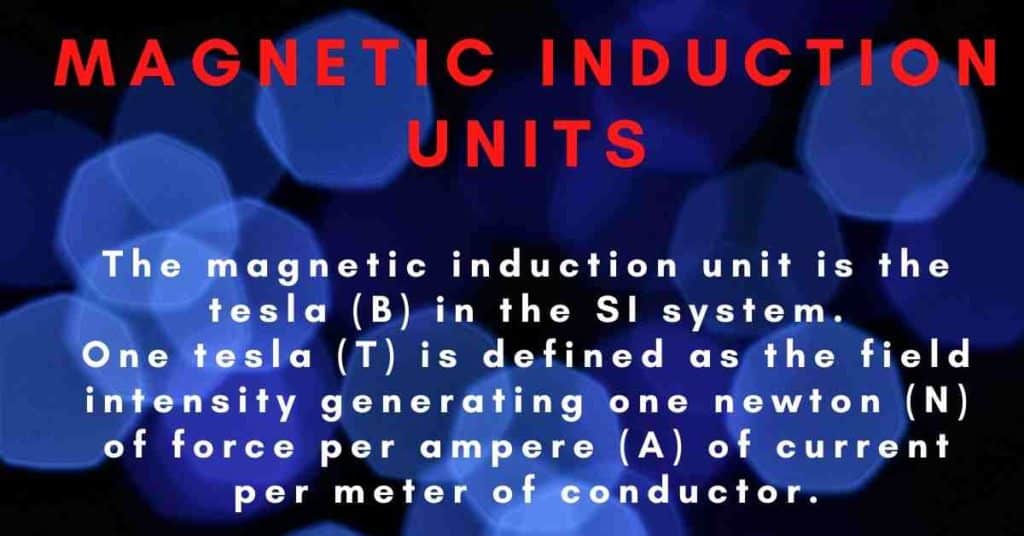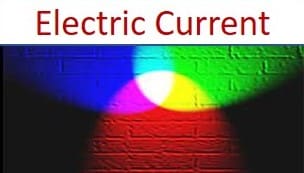Magnetic induction is the process by which an ordinary piece of iron temporarily gains magnetic characteristics due to the presence of another magnet nearby. For example, the nail transforms into a magnet and gets magnetic properties. The magnetic induction Unit is Tesla. Keep on reading to know more about Tesla.

Table of Contents
Magnetic Induction Unit
The magnetic induction unit is the tesla (B) in the SI system.
One tesla (T) is defined as the field intensity generating one newton (N) of force per ampere (A) of current per meter of conductor.
Tesla = N × A-1 × m-1 = kg × s-2 × A-1
- One tesla equals one weber per square meter, corresponding to 104 gauss.
- 1 Tesla = 10,000 gauss.
- Gauss represents the number of magnetic field lines per square centimeter, emitted by a magnet. The higher the value, the more lines of magnetism are emitted by the magnet.
- One weber is equal to one volt per second, or 108 maxwells.
- The Weber is named after the German scientist Wilhelm Eduard Weber (1804-1891).
- The magnetic flux unit in cgs electromagnetic units is the Maxwell’s (Mx). 1 Mx equals 1 gauss cm2.
- The Mx is no longer in use since international standards have moved to SI units, which measure magnetic flux in Weber.
- The weber is a much larger unit, equal to 100 million Mx.
Magnetic Induction- Real-Life Examples
Magnetic induction is a phenomenon that occurs when a magnetic field passes through a conductor and creates an electric current. Here are some real-life examples of magnetic induction:
- Generators: Electrical generators use magnetic induction to convert mechanical energy into electrical energy. The generator’s rotor has a magnet that rotates inside a stator, which contains coils of wire. The magnetic field from the rotor induces an electric current in the coils, generating electricity.
- Transformers: Transformers use magnetic induction to change the voltage of an alternating current (AC) electrical supply. A transformer has two coils of wire wrapped around a core made of iron or other magnetic material. When AC current flows through one coil, it creates a magnetic field that induces a voltage in the other coil.
- Induction cooktops: Induction cooktops use magnetic induction to heat cookware directly instead of using a gas flame or electric heating element. The cooktop creates a magnetic field that induces an electrical current in the metal cookware, which heats the food.
- Metal detectors: Metal detectors use magnetic induction to detect the presence of metal objects. The metal detector creates a magnetic field that induces an electrical current in the metal object, which in turn creates its own magnetic field. The metal detector senses the changes in the magnetic field and alerts the user.
- Magnetic stripe cards: Credit cards, debit cards, and other types of magnetic stripe cards use magnetic induction to store data. The stripe on the back of the card contains tiny particles of magnetic material that are aligned in a specific pattern. When the card is swiped through a card reader, the reader’s magnetic field induces an electrical current in the particles, which generates a signal that contains the card’s data.
Working Principle of Magnetic Induction
- Magnetic induction is based on Faraday’s law of electromagnetic induction.
- Whenever a conductor is exposed to a changing magnetic field, an electromotive force (EMF) is induced in the conductor.
- The induced EMF can result in an electric current if the circuit is closed.
- Magnetic induction occurs when a magnetic field passes through a conductor, such as a wire.
- The magnetic field creates a force that moves the electrons in the conductor, creating an electric current.
- The strength of the induced current depends on the strength of the magnetic field, the speed at which the magnetic field changes, and the properties of the conductor.
- Magnetic induction is used in electrical generators, where a rotating magnet creates a changing magnetic field that induces an electrical current in a nearby coil of wire.
- Transformers also use magnetic induction, where two coils of wire wrapped around a common magnetic core create a changing magnetic field that induces a voltage in the secondary coil.
- The voltage induced in the secondary coil depends on the ratio of the number of turns in the primary and secondary coils.
- Magnetic induction is a fundamental principle of electromagnetism that underpins many important electrical technologies, including generators, transformers, and induction motors.
Classification of Magnetic Materials
Based on the magnetic permeabilities, materials can be classified as follows:
Diamagnetic Material
Diamagnetic material has a constant relative magnetic permeability of somewhat less than 1. An example of a diamagnetic substance is bismuth, and when it is placed in a magnetic field, it partially expels the external magnetic field and lowers the magnetic flux density inside it. In addition, Diamagnetism, by producing a magnetic field in opposition to an externally supplied magnetic field, produces a repelling effect.
Paramagnetic Material
Paramagnetic material has a constant relative permeability which is somewhat more than 1. Platinum is a paramagnetic substance that becomes magnetized in the direction of the external magnetic field when put in a magnetic field.
Ferromagnetic Material
The relative permeability of ferromagnetic materials is constant. Iron is an example of a ferromagnetic substance. As the magnetizing field increases, so does the relative permeability, which reaches a maximum and then declines. Many magnetic alloys, including pure iron, have a maximum relative permeability of 100,000 or higher.
Summary
- Magnetic induction refers to a process through which an ordinary piece of iron momentarily acquires magnetic properties as a result of the presence of another magnet nearby.
- The magnetic induction unit is tesla.
- Tesla is defined as field intensity generating one newton (N) of force per ampere (A) of current per meter of conductor.
- one tesla is equal to 10000 guass.
Related Topics
Direct Current
Alternating Current
Biot Savart Law: Statement, Derivation & Applications
Conductor And Insulator
Frequently Asked Questions
1. What is electromagnetic induction?
Electromagnetic induction happens when an alternating current circuit creates a current in another circuit just by being put close. In contrast to direct current, which we obtain from batteries, alternating current is the type of electricity that flows through power lines and house wiring.
2. Define magnetic pole?
The magnetic poles are the areas of the magnetic field where the magnet has the most power. If a magnet is placed in a free-turning position, it will revolve north-south. The magnet’s north-seeking pole, or north pole, is the end that faces north.
3. Explain the interaction between electricity and magnetism?
Electromagnetism is the study of the interaction between magnetism and electricity. A magnet’s movement may create energy. A magnetic field may be created by the passage of electricity.
4. What are the types of magnets?
There are three main types of magnets: temporary, permanent, and electromagnets.
5. What is ampere’s law?
According to Ampere’s law, the integral of magnetic field density (B) along an imaginary line is equal to the product of free space permeability and current enclosed by the path.
More Interesting Topics
Is HCl Polar Or Nonpolar?
BrF3 (Bromine trifluoride) Molecular Geometry
The Density of Water lbs/U.S gal
How Many Neutrons Does Hydrogen Have?
Electromagnetic Force
- BCl3 Lewis Structure in four simple steps - November 1, 2023
- PH3 Lewis Structure in four simple steps - October 8, 2023
- PF3 Lewis structure in four simple steps - September 24, 2023



